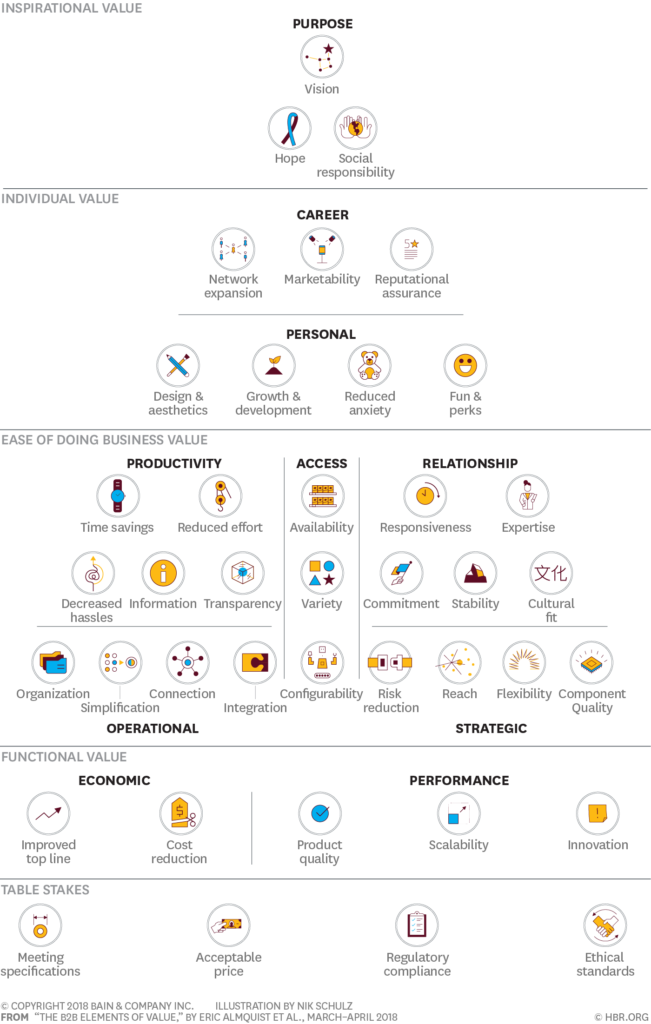Hi, I’m James. Thanks for checking out Building Momentum: a newsletter to help startup founders and marketers accelerate SaaS growth through product marketing.
What makes you different compared to competitors?
You’ve probably been asked this question before, and answered with something similar to the below:
- Our product is our differentiator.
- No, actually, our people are our competitive differentiation.
- Our pricing: economies of scale make us cheaper whilst providing the same service.
- Customers love our design-led ethos, that makes us stand out.
But, is it really?
If you workshopped your competitive differentiator internally, relied on biased interpretations of competitor strengths and weaknesses from your team, then… honestly? I’d say you don’t know the real answer.
In this post:
What is a differentiator?
Definition: something that enables a difference or distinction to be made.
In the context of B2B SaaS, a differentiator is an element of your product, service, worldview, or other method that positions you away from competitors in some aspect.
Often, marketers and founders early in the journey will rely on objective differentiation: the product, the service, the performance, the economic value – or my pet peeve, configurability.
Standout SaaS companies, especially those that grow faster, understand earlier on that what makes them distinct is not something that can be shown or demonstrated or modelled – but it’s something the customer can believe in… something they can buy into.
Think about category creation – it’s not about naming a new type of product, but about naming a new game people are playing.
The B2B Elements of Value Pyramid
This diagram, created by Bain, extends Maslow’s hierarchy of needs to order the motivations of B2B buyers. Read more about the pyramid here.

The base begins with table stake, basic requirements, and functional value like the product or the price.
As we go up the pyramid, elements of value become less tangible and more about the implication of using the product – first within the organization, then what matters to the individual buyer.
The pyramid tops out with purpose – hope, vision, and social responsibility. Here, differentiators aim to align the vendor with the buyer’s cultural and ethical worldview.
Think about some SaaS products you know. Take Drift:
Yes, there is functional product value.
The product delivers high impact implications to the organizations.
It allows individual buyers to signal their innovation and become more marketable themselves in the job market.
They build community and a category through their vision of transforming the way companies connect with their customers.
They offer a bright spark of hope in an otherwise grey sea of same-same, from their tone of voice to their visual brand to their events to their product launches.
Discovering your differentiators
Notice I said discover your differentiators, not define them.
Many marketers I know don’t know about the different elements of value above and therefore struggle to determine what their competitive differentiators might be.
But they’re also usually looking inward to find the answers.
NIHITO: Nothing Important Happens In The Office – Pragmatic Marketing
The best way to understand why you are different in the market is to look to your customers and others in the market.
Follow the questions in my customer development framework, and ask them to your customers, friendly experts, and non-affiliated other buyers in the market. Ask your competitor’s customers too.
From here, you’ll be able to define your personas: their jobs, pains, gains, and triggers. This forms the basis of the value your customers desire. From there, discovering your differentiators is simple. What value are your customers wanting that they can’t get elsewhere?
Maybe they are super price sensitive, so price is a distinction – or your product is a 100% fit for their needs.
But it’s more likely that you’ll best differentiate when you can meet higher-level needs as well. Help an organization deliver on qualitative goals. Allow the buyer to become more marketable. Set a vision that buyers can literally buy into.
And there will be more than one differentiator, more than one element of value that you’re meeting. See the Drift example above. So make sure to prioritize them in a way that aligns with your persona’s triggers, their motivations for searching, switching, or buying.
As an example, at Headstart our personas were radically progressive, so we prioritized our ethos and vision. We still promoted the economic benefits and savings, but led with the heart, and followed with the brain.
What’s your competitive differentiator?
Next time, don’t just wing it. Look to your customers and prospects to understand why you matter to them.
Thanks for reading! Let me know what you thought – find me on Twitter and LinkedIn.
P.S. If you’ve found value in Building Momentum, could you buy me a coffee? Here’s my tip jar – any support is gratefully appreciated!
P.P.S: If you enjoyed this post, will you share Building Momentum with your network?